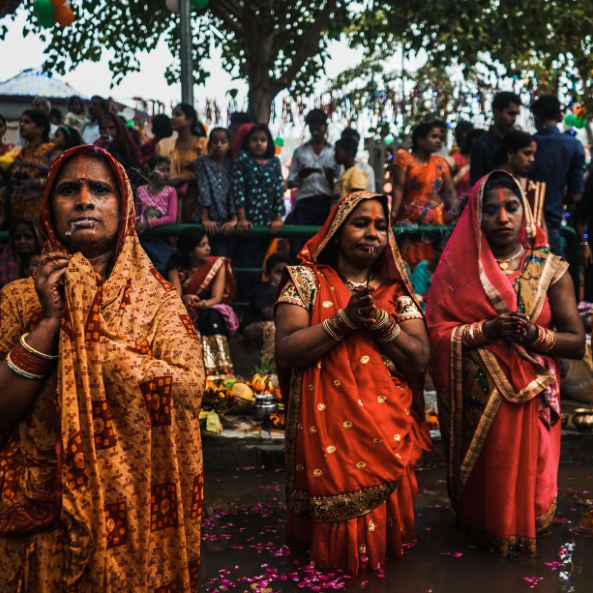There is no formal definition of third-gender identity in India, and people who identify as neither men nor women are referred to as Hijra. Which, in Western definition, most closely translates as transgender. Nonetheless, the community of Hijras goes back to ancient India, specifically during the Mughal Empire. Hijras were one of the well-respected communities in India. They were seen as loyal, trusted to hold important administrative positions, and looked up to as spiritual leaders of the Hindu religion. Many believed they could bless while warding off evil, having a prominent role in Indian culture and society. This belief is illustrated through many stories that are passed down through generations.
One example is the story of Lord Rama, who was banished from his kingdom and asked to spend 14 years in the forest. While leaving, he told his followers that men and women should wipe their tears and leave him. In response, all women and men left, however, the Hijra stayed because they were neither men nor women, and they stayed with him in the forest, showing their loyalty. This example not only illustrates the existence of Hijra peoples in ancient India but, more importantly, the importance they held within Indian society and culture throughout generations.
However, this admiration took a turn when the British colonized India in 1858. With the new ruling power came new Western concepts imposed on Indian society and culture. Westernized ideas got integrated into the society of India, which created the gender binaries of male and female, completely excluding the Hijra community. This integration went further, impacting laws, illustrated by the creation of Section 377 of the Indian Penal Code, which illegalized activities deemed against the order of nature. This new law forced the Hijra community from their previous prominent leadership roles to become social outcasts.
This social exile not only gave justification for the mistreatment of the Hijra community but it caused socioeconomic inequality for the community, which still has significant implications today. It is also important to note that this social exile towards Hijras also impacted members of the broader LGBTI community in India. Due to the stigmas and discrimination, Hijras faced economic challenges, which bleed further to challenges in educational opportunities and jobs, along with access to resources such as medical care and other government resources. This caused the community to live in extreme poverty, where begging, dancing, and doing sex work was the only way to receive income. This also made them more vulnerable to sexual and physical abuse, specifically from law enforcement, as the new law, Section 377, subjects Hijras to persecution for their self-identification. Thus Hijras continuously face mistreatment by law enforcement.
Most importantly, the government implemented no protection or regulation to protect Hijras from harassment in work, medical care, and other aspects of daily life. Therefore, they continued to endure continuous violence.
This stigma and marginalization of Hijras continued for decades, surpassing the ending of British colonial rule in 1947, and continued into the 21st century. It was not until 2014 that the Indian legislature began to consider the safety and status of the Hijra community. During this year, The Rights to Transgender Persons Bill was drafted, declaring the illegalization of many forms of discrimination toward the Hijra community. It also would ban the harsh policing of Hijras and recognize Hijras as economically disadvantaged. This bill would qualify them to benefit from India’s Affirmative Action Program.
The Rights to Transgender Persons Bill was passed in 2016, marking the first official recognition and protection of the Hijra community in India since the British colonial era. However, like many new bills introduced to the legislature, it had downsides. One of the main procedures presented in this bill was the screening of Hijras to receive a certificate and ID that would provide access to government benefits and resources. However, this rigorous screening process made it difficult for many Hijras to obtain the certifications. One of the main reasons for this is that the people in charge of making decisions were not taught about gender identities. Also, they were operating with the ingrained biases that had already existed. This challenge illustrates the importance of representation in spaces that provide resources for marginalized groups and shows how critical it is for legislatures to think about the further impact of laws beyond their creation.
Hence, although there were great intentions in recognizing the Hijra community, it failed to guarantee many fundamental rights crucial to the Hijra community.
Today, the Hijra community has made huge strides as there have been many firsts within the community. For example, Joyita Mondal became India’s first third-gender judge. There was also the first Hijra police officer named in the state of Tamil Nadu. In addition, Natasha Biswas became India’s first third-gender beauty pageant winner, and Kochi Metro Rail Ltd. became India’s first government-owned company to provide significant employment opportunities to Hijras. These examples and many success stories illustrate the progressive shift in society and further inclusion into the broader movement toward LGBTI rights. This progress brings hope that the many remaining social stigmas will follow this progression and be entirely erased.

